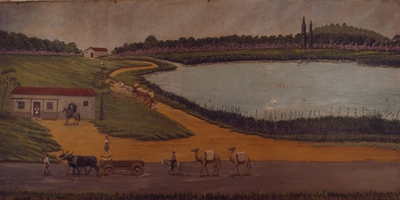
|
The fall of Constantinople in 1453 symbolically marks the beginning of Ottoman rule. From the 15th to the 19th century Drama is the local capital, and a new village, Rakça, emerged at short distance from the former city of Philippi, which was by then deserted. The edges of the plain were renowned for their fertility. The cultivation of cotton rose during the 17th and intensified during the 18th century.
In Dikili Tash, a water-mill was built a few meters southeast of the mound and an inn (“khani”) next to the monument of Caius Vibius. Both buildings are mentioned by L. Heuzey, who visited the area in 1861.
Shortly before the First World War, eastern Macedonia became the subject of conflict between the former citizens of the Ottoman Empire. It was initially annexed by Bulgaria (1912), but ultimately became part of Greece in 1913. |